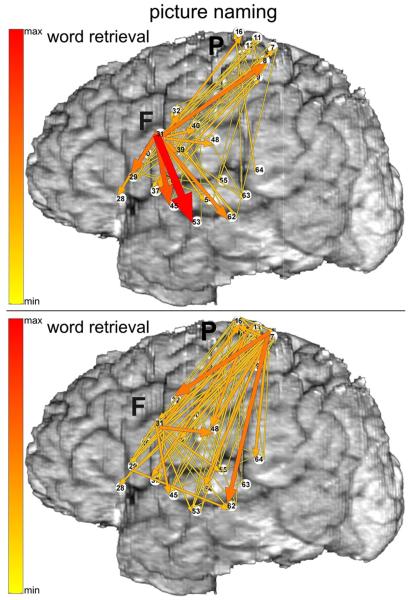Fig. 3.
Event-related functional interactions revealed with ECoG during picture naming. The task was performed with spoken (top) versus signed (bottom) responses. Functional interactions were analyzed with multivariate autoregressive modeling of signal interactions based on Granger causality. Event-related increases in functional interactions at high gamma frequencies (70–115 Hz) are illustrated for an interval corresponding to object recognition and word retrieval (i.e., from visual stimulus onset to median onset latency of spoken or signed responses). Arrows indicate the directions and intensities of increased interactions that are statistically significant. The width and color of each arrow both represent linearly the magnitude of the interaction. Color scale (left) is of the same range for all interactions (top and bottom), scaled from maximal to minimal. Ten percent of the smallest interactions is not shown. Reprinted from: Korzeniewska A, Franaszczuk PJ, Crainiceanu CM, Kuś R, Crone NE. Dynamics of large-scale cortical interactions at high gamma frequencies during word production: event related causality (ERC) analysis of human electrocorticography (ECoG). NeuroImage 2011;56:2218-37. Copyright 2011, with permission from Elsevier.

